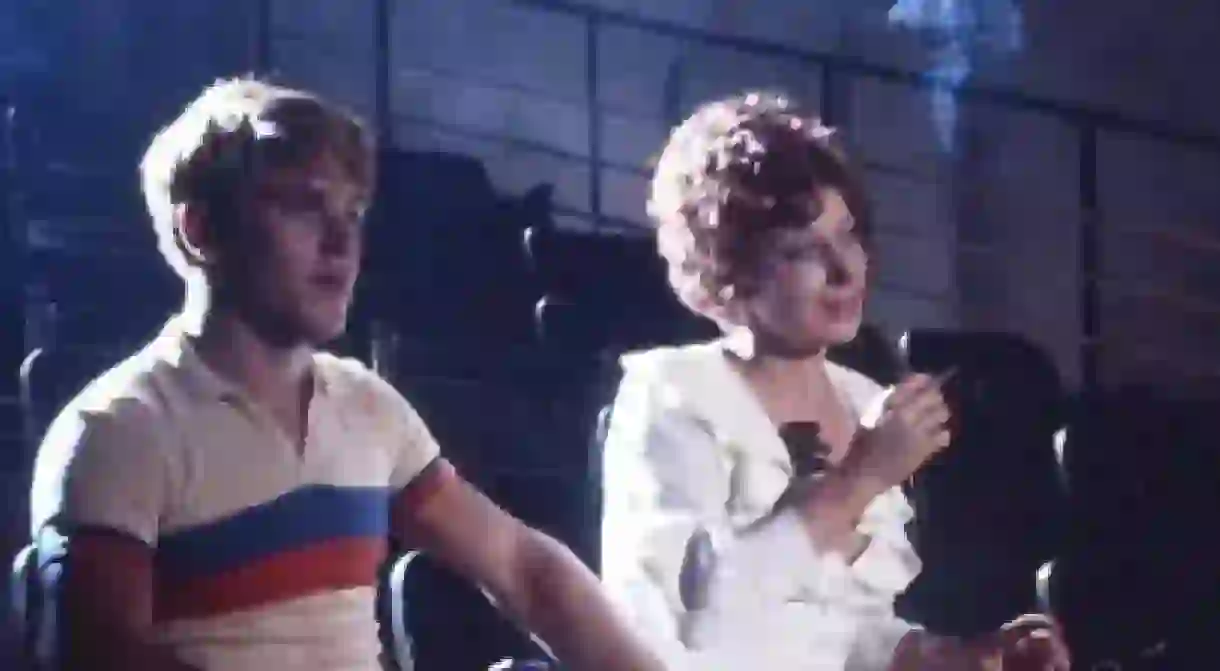Federico Fellini's Greatest Hits

Take a peek at six of the best movies directed by the great Italian director Federico Fellini (1920-93). Our mini-survey of the Maestro’s work begins with his early forays into neorealism and ends with a revered autobiographical classic.

I Vitelloni (1953)
Regarded by many critics as Fellini’s first great work, I Vitelloni is an emotionally rich film made in the tradition of postwar Italian neorealist cinema. Five young men find their lives at a crossroads in a small town. The straightforward story cuts right to the heart of what the characters are feeling and experiencing. The men live in a town where nothing interesting ever happens, and consequently nothing happens to them as they waste away their lives in dead-end jobs. The film won the Silver Lion at Venice in 1953 and has inspired many other directors, notably Martin Scorsese when he was making Mean Streets.
La Strada (1954)
Winner of the inaugural Oscar for Best Foreign Language Film in 1956, La Strada became an instant classic. Giulietta Masina, Fellini’s wife and muse from 1943 until his death in 1993, plays a waif unwillingly sold into the life of a travelling strongman, played by Anthony Quinn. The film deals with the cruelty inflicted upon Masina, as well as the way her spirit lessens the cruelty of the strongman. Departing somewhat from his neo-realist past, Fellini really came into his own here, in what many consider to be his greatest film.

Nights of Cabiria (1957)
Here Masina plays a headstrong prostitute who, wandering the streets of postwar Rome, desires to be loved in a happy and stable environment far removed from the world that she inhabits. She finds herself exploited and taken advantage of, yet remains inherently resolved and hopeful throughout. Like La Strada, Nights of Cabiria was scored by Nino Rota, who went on to compose the soundtracks for the first two Godfather films and Franco Zeffirelli’s Romeo and Juliet.
La Dolce Vita (1960)
In this landmark opus, Marcello Mastroianni stars in the role of a gossip columnist in search of “the sweet life” of Rome over the course of seven days and nights. “Marcello” encounters an assortment of characters who embody this elusive life, in particular the impossibly sensual actress Sylvia, played by Anita Ekberg. The columnist views this woman as the unobtainable embodiment of the life he envisions. The colourful characters and exotic situations present a kind of world that exists beyond mundane reality. This is a Fellini film in which the real and unreal merge.

8½ (1963)
In one of the greatest films about the film-making process, Mastroianni plays a middle-aged director who sways between reality and unreality. The director on-screen is incapable of making a film, but the director behind the camera has more to say than ever before. Fellini takes us into the mind of a man whose thoughts are dominated by flashbacks and fantasies while he’s experiencing marital troubles. A quintessential European art-house film.
Amarcord (1973)
This semi-autobiographical coming-of-age tale set in the Mussolini era of the 1930s is the only color film on this list. Amarcord has no real plot, but is instead structured as a series of light-hearted vignettes that reflect Fellini’s fondness for his youth and the people he knew at the time – as well as his bewildered contempt for the controlling forces of Fascism and Catholicism. Fellini’s later films are frequently described as self-indulgent and pretentious, but Amarcord is the exception to the rule thanks to the heart and soul he poured into it.














